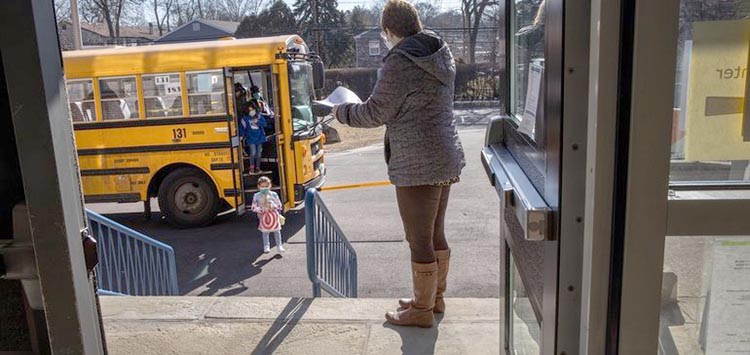
School violence often increases after long breaks, but as students return to in-person learning, administrators can take steps to prevent it.
From K-12 Dive
By Naaz Modan
April 22, 2021
Students are returning to school in person following over a year of building closures due to the COVID-19 pandemic. And as students return, so too do school safety concerns.
Just last week, for example, an armed high school student was fatally shot at Austin-East Magnet High School in Knoxville, Tennessee, during a confrontation that also left a school resource officer injured.
“If you look at all the variables that have led to not only school shootings, but shootings in general, all the variables have gotten stronger over the year and the pandemic,” said Ron Astor, a school safety expert and professor of social welfare at the University of California, Los Angeles. He cited stressors of the pandemic alongside racial and political upheaval, like the U.S. Capitol riot and the police-involved fatal shootings of Black Americans, as “a swirl of different variables that make me really worried.”
According to a recent report by Gaggle, a security management system used by districts to monitor student activity, there has been a 35% increase in threats of suicide and self-harm and a 23% increase in threats of violence against others over the course of the pandemic. Compared to the academic year prior to the pandemic, this marks a 67% increase in suicide or self-harm and threats of violence against others.
“My anticipation is that we would have not only more shootings, but more suicide ideations and more suicide attempts, and more of them related around issues of hate,” Astor said.
Adopting a public health approach and looking for red flags
“I think a lot of [school safety] depends on how we respond post-pandemic,” said Astor. As students return, administrators in many places have made it a point to prioritize mental wellbeing and easing students back into the classroom rather than nosediving into academic recovery.
“Schools kind of have to shift their gears to a public health approach,” said Astor. “Kids are coming in with suitcases of really horrible experiences.”
As students return, educators should be prepared to assess students’ pre-pandemic challenges and stressors, the experiences they had during quarantine, and the impact of adapting to the changes present in their lives as communities reopen, said Rob Coad, a school psychologist and member of the National Association of School Psychologists School Safety and Crisis Response Committee, in an email.
“Students with complex histories or who experienced significant stressors during the pandemic will likely need support at this time,” he added.
The pandemic has also vastly increased the number of students needing support, said Astor. Typically, schools have adopted a pyramid model with most kids, who do well even in really difficult environments, at the bottom and a smaller group of kids at the top who are suicidal, have access to weapons, have anger, or are in harm’s way and need stronger and more select services.
“Now, that pyramid has turned upside down,” said Astor.
Photo: Getty Images
Read this and other stories at K-12 Dive

